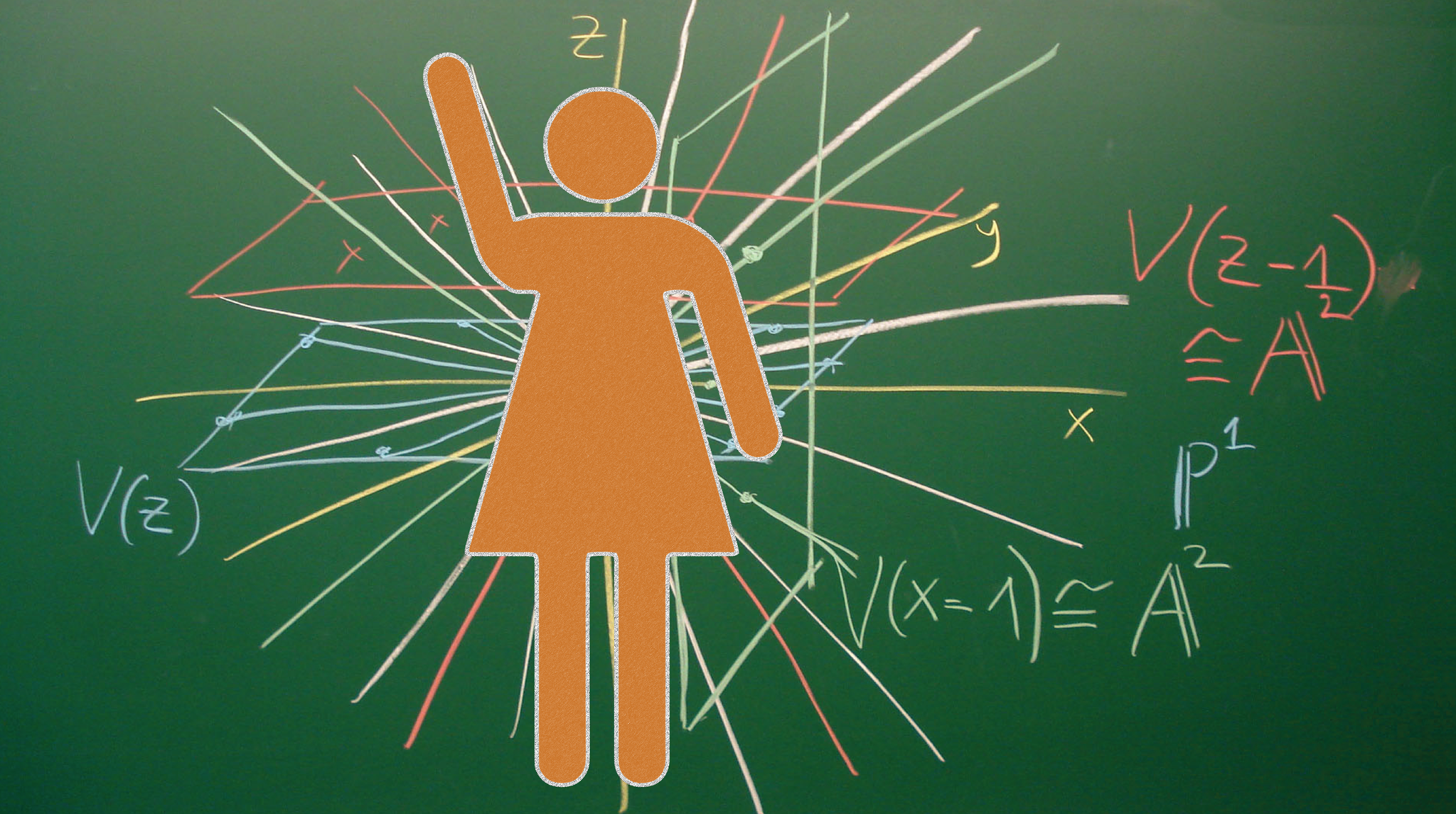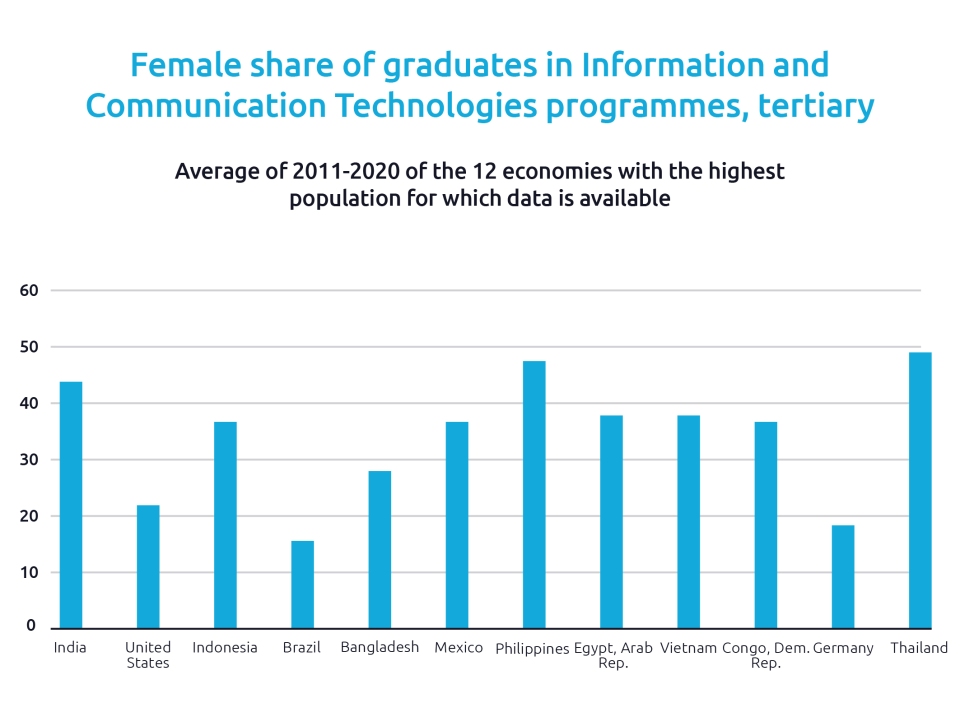

Intelligent industry and narrowing the gender gap
04 January 2022 Cecilia Ugaz Estrada

by Cecilia Ugaz Estrada, Director, Gender Equality and Empowerment of Women Office, United Nations Industrial Development Organization (UNIDO)
Originally published by Capgemini, a global company providing consulting, digital transformation, technology and engineering services, as part of its Conversations for tomorrow series. See here.
Over the coming years and decades, intelligent industry, and the underlying key technologies of the Fourth Industrial Revolution – such as 5G, Artificial Intelligence and big data analytics – will transform labour markets around the globe. However, there is a risk that intelligent technologies and smart intelligent products could perpetuate or even amplify inequalities if they are not designed in a way that takes account of the different realities of women and men and of persistent and harmful gender biases.
Furthermore, estimations vary considerably when it comes to the net effect of automation, digitalization and robotization on the transformation of jobs – in other words, what effect these technological developments will have on jobs gained, jobs lost and jobs requiring new skill sets. Today, there is some uncertainty about the gender-differentiated effects of the Fourth Industrial Revolution on women’s and men’s wages and on labour force participation rates. However, on balance, research suggests that it will reinforce existing inequalities and that women will benefit less than men both in advanced and in emerging economies.

Designing bias-free intelligent industry products
The saying that ‘tools are only as good as the hands that wield them’ also applies to data and algorithms that feed machine learning and intelligent products. If companies want to avoid becoming complicit in replicating existing gender norms and stereotypes, codes that analyze and process data need to be designed with specific attention to equality and non-discrimination (or, if already available via open source or other means, adapted with attention to equality). For example, when designing an intelligent car, accurate speech recognition is paramount. However, while progress has been made in the last years, speech recognition systems are still better at responding to men’s voices than to women’s.
Applying gender considerations to the fourth industrial revolution technologies that feed intelligent industry solutions is especially important since gender-blind machine-learning models not only perpetuate but also further exacerbate inequalities. However, Capgemini’s recent research highlights that only 15% of organizations today consider “inclusive design of digital tech” as an important consideration. Another example from intelligent recruitment software underscores this. A few years ago, a large multinational company had to revisit the design of its state-of-the-art recruiting engine. The reason was that the applicant pool for software developers and other technical posts was overwhelmingly male, so over time the engine taught itself to prefer male over female candidates for these posts (it did this by penalizing CVs that included the word “women’s”, such as in “women’s college.”)
With the ever-increasing use of advanced digital solutions in improving business processes and developing smart products, auditing methods that focus on fairness are increasingly important. This includes testing software for discrimination as well as remedial processes and tools for fairness-focused debugging.
The business case is clear, and female talent is available
Women and minorities are a large and underserved consumer base. However, progress on mainstreaming gender issues into product design has been uneven across economies and sectors, with the traditionally male-dominated industrial and information and communication technologies (ICT) sectors lagging behind. This poses risks for both producers and consumers. Take a step-monitoring device that accurately counts the number of steps in household activities or when pushing a stroller – activities that are still to a large extent being done by women. This is arguably of more value to consumers than one that underestimates energy expenditure and steps during household work by up to 34% and 74% respectively.
Companies with homogenous technical teams and leaders run the risk of developing products that are customized to only a fraction of their potential consumers. The good news is that this is avoidable. While it cannot be assumed that women are gender-equality experts simply by virtue of their gender – the same applies to factors such as geographical, cultural, and social background diverse teams are more likely to bring in different perspectives, sensitizations and experiences that benefit processes and products. Capgemini’s recent research also highlights that organizations with advanced inclusive practices are four times more likely to create inclusive products.
The private sector business case for advancing gender diversity and equal participation of women and men is clear. Numerous studies show a correlation between gender equality and high levels of female representation in a company’s management and decision-making bodies on the one side, and its levels of innovation, profitability, and sustainability on the other. Yet, women are still significantly underrepresented in the industries of tomorrow – industries that are characterized by high technology skills, high productivity, and high wages – as well as in medium- and high-skill occupations. These occupations are, on the one side, expected to benefit most from new opportunities created by the Fourth Industrial Revolution and, on the other side, make important decisions as regards processes and products.
In tertiary education, the share of female graduates (as a share of total graduates) in tertiary programmes in ICT, as well as in engineering, manufacturing and construction, is especially low, with respective cross-country global averages of 27% and 31%, based on available data from 2011 to 2020. However, the good news is that their shares have been increasing over the last decade. Interestingly, compared to other regions, the percentage of women graduates in ICT in the last ten years has been low in Europe: 21 out of the 33 economies with an average female share of graduates in ICT of below 20% are European countries, while in a sample of developing/emerging economies the female graduate share is more than 30%. (See the chart below)

Traditional gender norms impact the industries of tomorrow
While gender differences in science, technology, engineering, and mathematics (STEM) skills persist, a major challenge for equal representation of women and men in technical and managerial posts remains translating the increasing shares of female STEM graduates into increasing shares of women STEM jobs. In fact, the main impediment to gender equality for the industries of tomorrow are discriminatory social gender norms – norms that ascribe the caregiver role to women, while men are still seen as responsible for family income – and the conscious and unconscious biases emanating from there. The dearth of women in leadership, the domination of men in capital-intensive industries, and the discrimination faced by women in accessing finance and productive resources can be seen as symptoms of this broader phenomenon.
One example is the gender disparity in early-stage business investments, which also affects start-ups offering intelligent industry solutions: Less than 3% of venture capital was invested in women-led companies, a disparity that still holds true when controlling for variables such as education, professional experience and similar factors. The history of “male takeover” of programming and ICT equally demonstrates the relationship between the profitability of an occupation and the level of women’s representation. In its early days in the 1980s, when programming was still seen as a low-paid extension of a secretary’s data-processing work, women dominated the field. Only with the proliferation of the personal computer and the sector’s subsequent economic profitability, did programming and coding become a ‘male job’.
The ICT sector today still has one of the lowest percentage of women in management. In fact, a recent study showed that information technology companies have the lowest percentage of women in management boards across industries. Furthermore, only 14% of covered companies across all industries had a woman as head of the information technology department.
Actions to advance gender equality in the intelligent industry workforce
It is clear that empowered employees are productive employees. Therefore, creating a family-friendly work environment that enable employees – women and men – to balance work and private life also benefits companies. An important measure in this regard includes anti-harassment policies, flexible working arrangements, and a policy and culture encouraging parental leave, including paternity leave. Returnship programmes that support experienced professionals in re-entering the workforce after a longer period of absence, e.g. due to parental responsibilities or to continue their education, are also good practices.
These policies should be complemented by gender-responsive recruitment, skills development and promotion policies. Drafting vacancy announcements in a language that speaks to all genders, applying anonymized selection processes in early recruitment stages, and ensuring diversity on interview panels are some of the tried and tested methods in this regard. When it comes to enhancing women’s participation in leadership, adopting temporary special measures – such as quotas for training opportunities and positions – is one of the most effective methods.
Intelligent industry and digital transformation have enormous potential to make industries, economies and societies more inclusive, sustainable and just. As women constitute more than half of the world’s population, they should equally participate in and benefit from this development – in decision-making, in the workforce and as consumers.